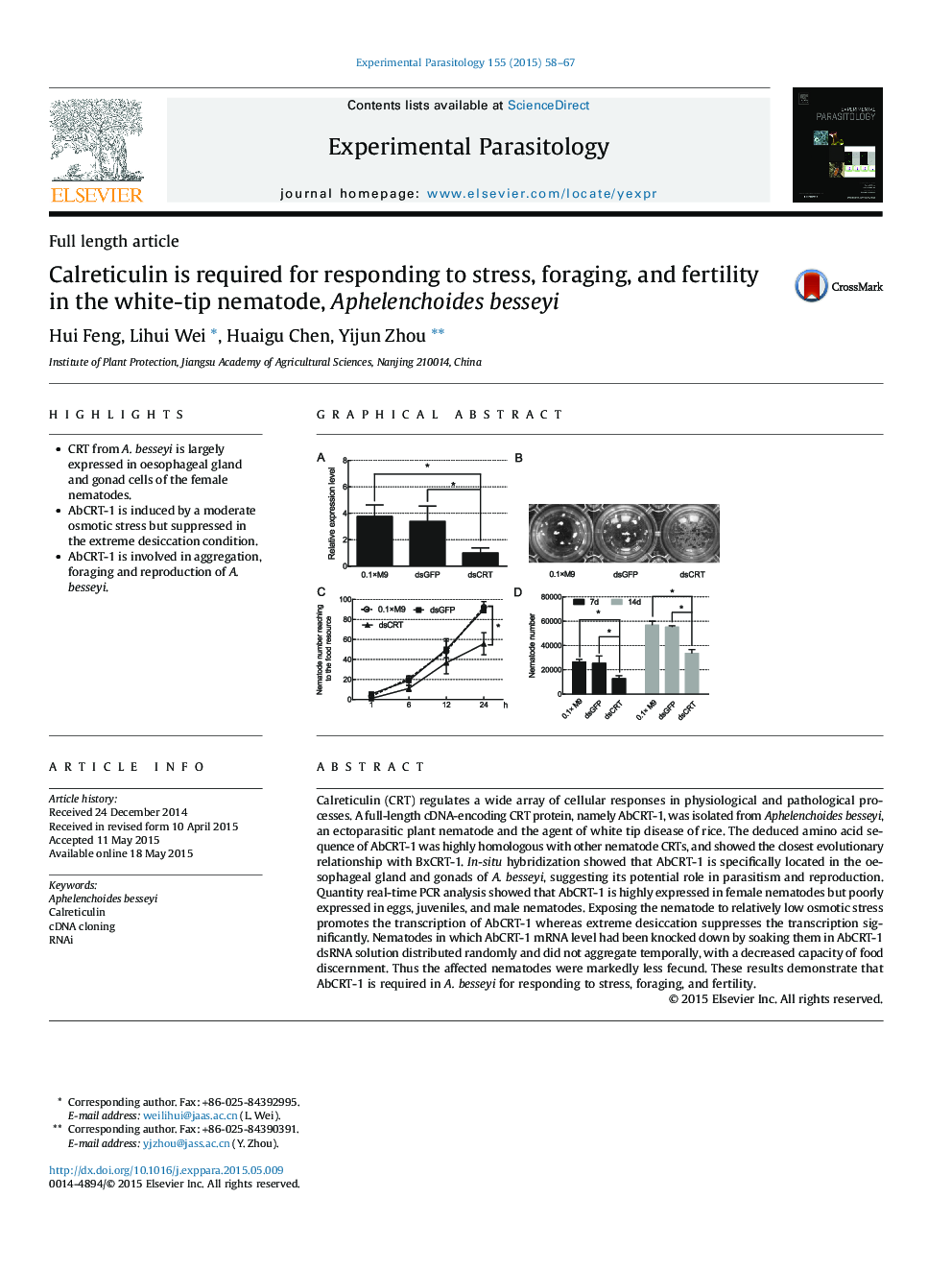| Article ID | Journal | Published Year | Pages | File Type |
|---|---|---|---|---|
| 4371007 | Experimental Parasitology | 2015 | 10 Pages |
•CRT from A. besseyi is largely expressed in oesophageal gland and gonad cells of the female nematodes.•AbCRT-1 is induced by a moderate osmotic stress but suppressed in the extreme desiccation condition.•AbCRT-1 is involved in aggregation, foraging and reproduction of A. besseyi.
Calreticulin (CRT) regulates a wide array of cellular responses in physiological and pathological processes. A full-length cDNA-encoding CRT protein, namely AbCRT-1, was isolated from Aphelenchoides besseyi, an ectoparasitic plant nematode and the agent of white tip disease of rice. The deduced amino acid sequence of AbCRT-1 was highly homologous with other nematode CRTs, and showed the closest evolutionary relationship with BxCRT-1. In-situ hybridization showed that AbCRT-1 is specifically located in the oesophageal gland and gonads of A. besseyi, suggesting its potential role in parasitism and reproduction. Quantity real-time PCR analysis showed that AbCRT-1 is highly expressed in female nematodes but poorly expressed in eggs, juveniles, and male nematodes. Exposing the nematode to relatively low osmotic stress promotes the transcription of AbCRT-1 whereas extreme desiccation suppresses the transcription significantly. Nematodes in which AbCRT-1 mRNA level had been knocked down by soaking them in AbCRT-1 dsRNA solution distributed randomly and did not aggregate temporally, with a decreased capacity of food discernment. Thus the affected nematodes were markedly less fecund. These results demonstrate that AbCRT-1 is required in A. besseyi for responding to stress, foraging, and fertility.
Graphical AbstractFigure optionsDownload full-size imageDownload as PowerPoint slide
